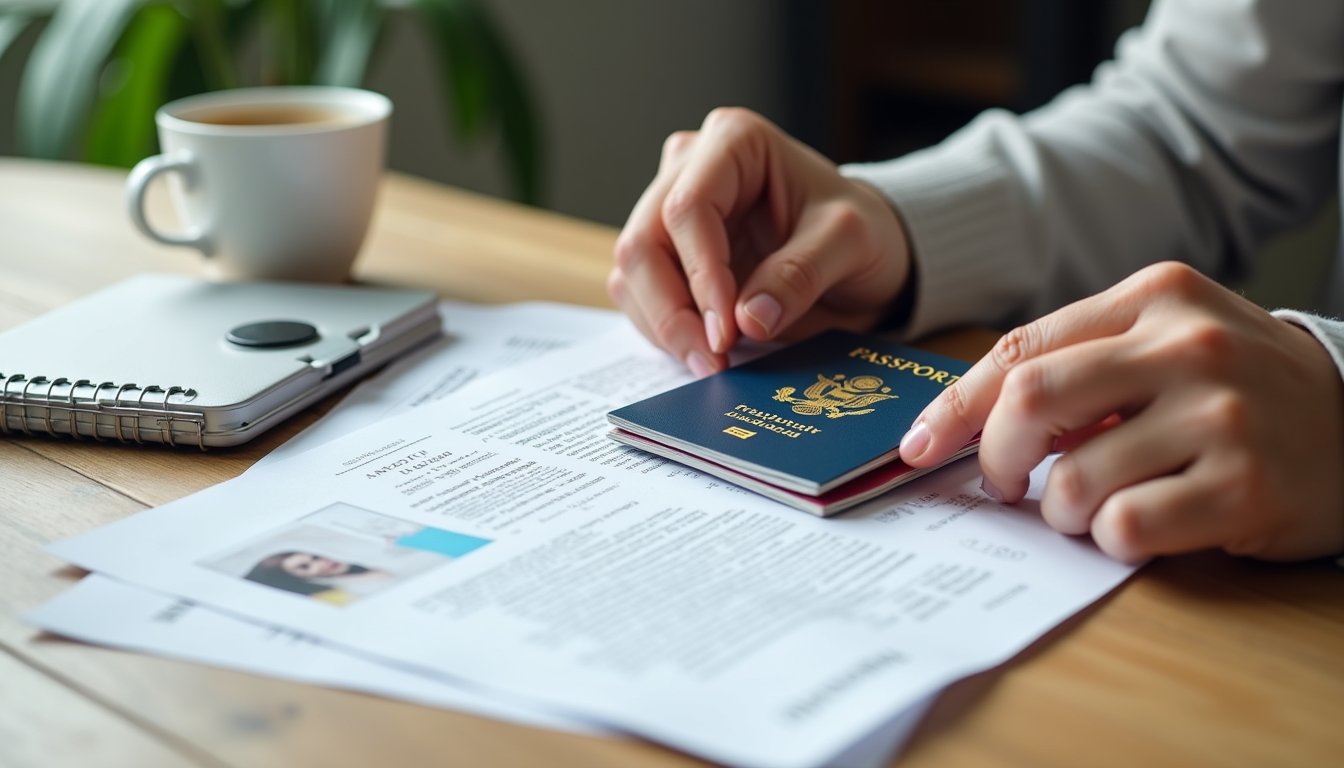You’ll need several key documents to file an insurance claim successfully: government-issued photo ID, current policy documentation, police/accident reports, and detailed photos of any damage. Keep medical records, repair estimates, witness statements, and payment receipts organized chronologically. Maintain a log of all communications with insurers and third parties, including dates, times, and representative names. Understanding the full scope of required documentation will strengthen your claim’s outcome.
Essential Personal Identification Documents
 When filing an insurance claim, you’ll need several key identification documents to verify your identity and establish your eligibility as a policyholder.
When filing an insurance claim, you’ll need several key identification documents to verify your identity and establish your eligibility as a policyholder.
Your primary requirement is a government-issued photo ID, such as a driver’s license or passport, which confirms your identity. You must also present your insurance card or policy document that contains essential details about your coverage. Many insurers will request proof of address through a recent utility bill or similar documentation to validate your residential information.
If you’re filing a claim for a business, you’ll need to provide business registration papers or company ID in addition to personal identification. Keep these documents updated and readily accessible to prevent delays in your claims process. Having complete documentation helps facilitate swift verification and processing of your insurance claim.
Proof of Insurance Coverage and Policy Details
You’ll need your current policy declaration page as the primary document showing your active insurance coverage and policy details. Your coverage limits documentation must clearly outline the maximum amounts payable for different types of claims, including liability, collision, and all-encompassing coverage. Keep your premium payment records handy to demonstrate that your policy was in good standing at the time of the incident.
Current Policy Declaration Page
The policy declaration page serves as the foundational document for your insurance claim, containing critical details about your coverage limits, deductibles, and policy terms. This essential document outlines your premium amount and includes indispensable information like your policy number, effective dates, and your status as the named insured.
When filing a claim, you’ll need quick access to your declaration page as proof of active insurance coverage. You can easily retrieve this document through your insurance provider’s website or by contacting your agent directly. Having your declaration page readily available will streamline the claims process and guarantee all claim details match your current coverage specifications. Keep this document in a secure, accessible location, as it’s imperative for verifying your insurance policy details during the claims process.
Coverage Limits Documentation
Building upon your policy declaration page, proper documentation of coverage limits provides a detailed overview of your insurance protection. You’ll need to present your insurance policy number and verify your active coverage dates to establish proof of current protection.
Gather exhaustive policy documentation that clearly outlines your coverage limits, deductibles, and maximum payout thresholds for different claim types. You should include a copy of your insurance ID card and any supplementary documents that detail specific coverages like liability, collision, and comprehensive protection.
Make sure your documentation specifies the policy’s per-incident limits and overall coverage maximums. This information helps expedite the claims process by confirming your eligible benefits and ensuring you understand the full scope of your insurance protection during claim settlement.
Premium Payment Records
Maintaining accurate premium payment records serves as critical evidence of your active insurance coverage and policy standing. You’ll need to keep detailed documentation of all payments made to your insurance provider, including dates, amounts, and confirmation numbers.
Store your premium payment receipts alongside your policy documents to demonstrate continuous coverage. This should include canceled checks, electronic payment confirmations, or bank statements showing automatic withdrawals. Make sure you’ve properly recorded your policy number and verified that all payments match the amounts specified in your insurance agreement.
When filing a claim, you’ll need to show that your coverage was active through consistent premium payments. Keep these records organized and easily accessible, as they’re essential for proving your policy was in good standing at the time of the incident.
Police and Accident Reports
You’ll need to obtain an official police report with your assigned report number, which serves as a critical document for your insurance claim. The report contains essential scene documentation, including the date, time, location, involved parties, and often diagrams showing how the accident occurred. Witness statements and initial fault assessments included in these reports help your insurance company determine liability and process your claim effectively.
Official Report Requirements
When filing an insurance claim, you’ll need to obtain official police or accident reports to document the incident properly. These reports serve as pivotal evidence for your claim, whether it’s for an auto accident, theft, or vandalism. Your insurance company typically requires this documentation to process and validate your claim.
Make sure your police reports include essential details such as the date, time, location, and a complete description of what occurred. You’ll also need information about all parties involved in the incident. While filing a claim, remember that some insurers may waive the police report requirement depending on specific circumstances. However, if you don’t provide a required report, you risk having your claim delayed or denied. Keep copies of all documentation for your records and prompt claims processing.
Scene Documentation Essentials
Proper scene documentation forms the foundation of a successful insurance claim. You’ll need to obtain a police report that details the accident’s specifics, including date, time, location, and statements from all involved parties. The report should also note any citations issued and the officer’s assessment of fault.
If police don’t respond to the scene, you’ll need to complete an accident report form yourself. This serves as an official record of the incident. Don’t forget to gather contact information from other drivers, passengers, and witnesses present at the scene.
Take clear photographs to strengthen your claim. Document the accident scene from multiple angles, capture all vehicle damage, and photograph any visible injuries. These visual records will provide indispensable evidence to support your insurance claim.
Medical Records and Treatment Documentation
Gathering extensive medical records and treatment documentation serves as the cornerstone of your insurance claim. You’ll need to collect copies of all medical bills, including detailed itemizations of services and treatments received. Guarantee you’ve obtained comprehensive medical records from each healthcare provider who treated your injuries.
Keep all receipts for out-of-pocket expenses related to your injury claims, including prescriptions, medical equipment, and transportation costs to appointments. If your personal injury has resulted in lost wages, document time missed from work with pay stubs and employer statements. Contact your adjuster to confirm specific documentation requirements for future medical needs, such as physical therapy or follow-up care. Organize these documents chronologically, making copies of everything before submission. This thorough documentation will strengthen your claim and help confirm fair compensation.
Vehicle Damage Photos and Evidence
To establish a solid foundation for your vehicle damage claim, thorough photographic documentation serves as pivotal evidence. When you file a car insurance claim, you’ll need clear, well-lit photos from multiple angles to show insurance companies the full extent of damage to your car.
| Documentation Type | Purpose |
|---|---|
| Close-up Photos | Detail specific damage areas |
| Wide-angle Shots | Show overall vehicle condition |
| Scale References | Include coins/rulers for size context |
Take photos immediately after the incident and organize them with timestamps. You’ll strengthen your claim by including repair estimates and related receipts. Don’t forget to capture both damaged and undamaged areas of your vehicle for comparison. Remember to use proper lighting and maintain focus in your photos blurry or dark images can weaken your car insurance claim.
Repair Estimates and Service Records

Three essential documents form the backbone of your insurance claim: repair estimates, service records, and vehicle valuation reports.
You’ll need to obtain written repair estimates from certified mechanics that detail all necessary parts and labor costs. Be sure these estimates align with your vehicle’s pre-accident condition and don’t exceed its actual cash value. Document your car’s pre-accident value using Kelley Blue Book or NADA Guides for accurate assessment.
Gather all service records showing prior maintenance and repairs to demonstrate your vehicle’s condition before the incident. Keep receipts for any temporary repairs or rental cars you’ve needed while your primary vehicle awaits service. These documents help establish your car’s value and condition, strengthening your case for appropriate compensation from the insurance company.
Witness Statements and Contact Information
Beyond repair documentation, witness accounts provide powerful support for your insurance claim. When an accident occurs, you’ll want to gather contact information from anyone who observed the incident, including their names, phone numbers, and addresses. This becomes especially important if there’s a dispute with another driver about what happened.
Ask each witness to provide written statements detailing their observations of the accident. These witness statements can help verify your version of events and strengthen your position during the claims process. Don’t forget to submit all witness information and their written accounts to your insurance company along with your other claim documentation. Having independent observers corroborate your story can make a significant difference, particularly in situations where liability isn’t immediately clear.
Payment Records and Financial Documentation
Maintaining detailed payment records and financial documentation forms a crucial foundation for your insurance claim. You’ll need to gather receipts and invoices that prove your purchases of damaged or stolen items, along with bank and credit card statements that verify these transactions.
For property claims, you should include appraisal reports or professional estimates that establish the value of lost or damaged items. If you’ve experienced income loss due to the incident, collect wage statements, pay stubs, and relevant tax returns. Keep all cancelled checks, payment confirmations, and billing statements that show expenses you’ve incurred during the claims process.
Your financial records must thoroughly support the extent of your loss. Organize these documents chronologically and make copies for your records before submitting them to your insurance company.
Third-Party Communication Records
Detailed records of your interactions with third-party insurers play a pivotal role in safeguarding your interests during the claims process. Soon after the incident, contact your insurance company and maintain detailed records of every communication with the other party’s insurance provider’s representatives.
Keep a thorough log of all phone calls, emails, and letters exchanged while determining who’s at fault. Document the date, time, and name of each representative you speak with, along with summaries of your discussions. When verbal agreements are made, request written confirmation to verify there’s no misunderstanding later. Save copies of all correspondence, including claim acknowledgments, settlement offers, and any claim-related decisions. These records will serve as essential evidence if disputes arise and help track the progress of your claim.
Frequently Asked Questions
What Information Is Needed to File an Insurance Claim?
You’ll need several key items to file an insurance claim effectively. Start by gathering your policy coverage details and following your insurer’s claim filing procedures. You must provide necessary documentation, including photos, receipts, and police reports (if applicable). Submit detailed damage assessment reports and maintain clear communication with your insurer throughout the process. Keep copies of all correspondence and document every step of your claim journey.
When Someone Hits You, Do You Call Your Insurance or Theirs?
When someone hits you, it’s best to contact both insurance companies. Start by calling the at-fault driver’s insurance to initiate the claim process and provide accident details. Then, notify your insurance company so they’re aware and can help if there’s any coverage issues. Document details from both conversations and get a coverage overview from each insurer. Keep your insurance policy handy, as you might need their support if complications arise.
What Four Records Are Needed to Send a Claim to an Insurance Payer Correctly?
To guarantee a smooth claim submission process, you’ll need four essential records: First, submit a completed claim form with your personal details and incident description. Second, provide your government-issued photo ID and policy documents. Third, include thorough photographic evidence of damages. Fourth, attach all original receipts and invoices. Following these claim documentation requirements carefully will help reduce claim rejection and expedite your claim filing timeline.
What Not to Say in an Insurance Claim?
When filing an insurance claim, you’ll need to be careful with your statements. Don’t admit fault, even if you think you’re responsible. Avoid speculating about what might have happened, and don’t exaggerate damages or injuries. Keep your statements consistent and never contradict yourself in follow-up conversations. It’s also important that you don’t discuss settlement offers with other parties, as this could compromise your claim’s outcome.

